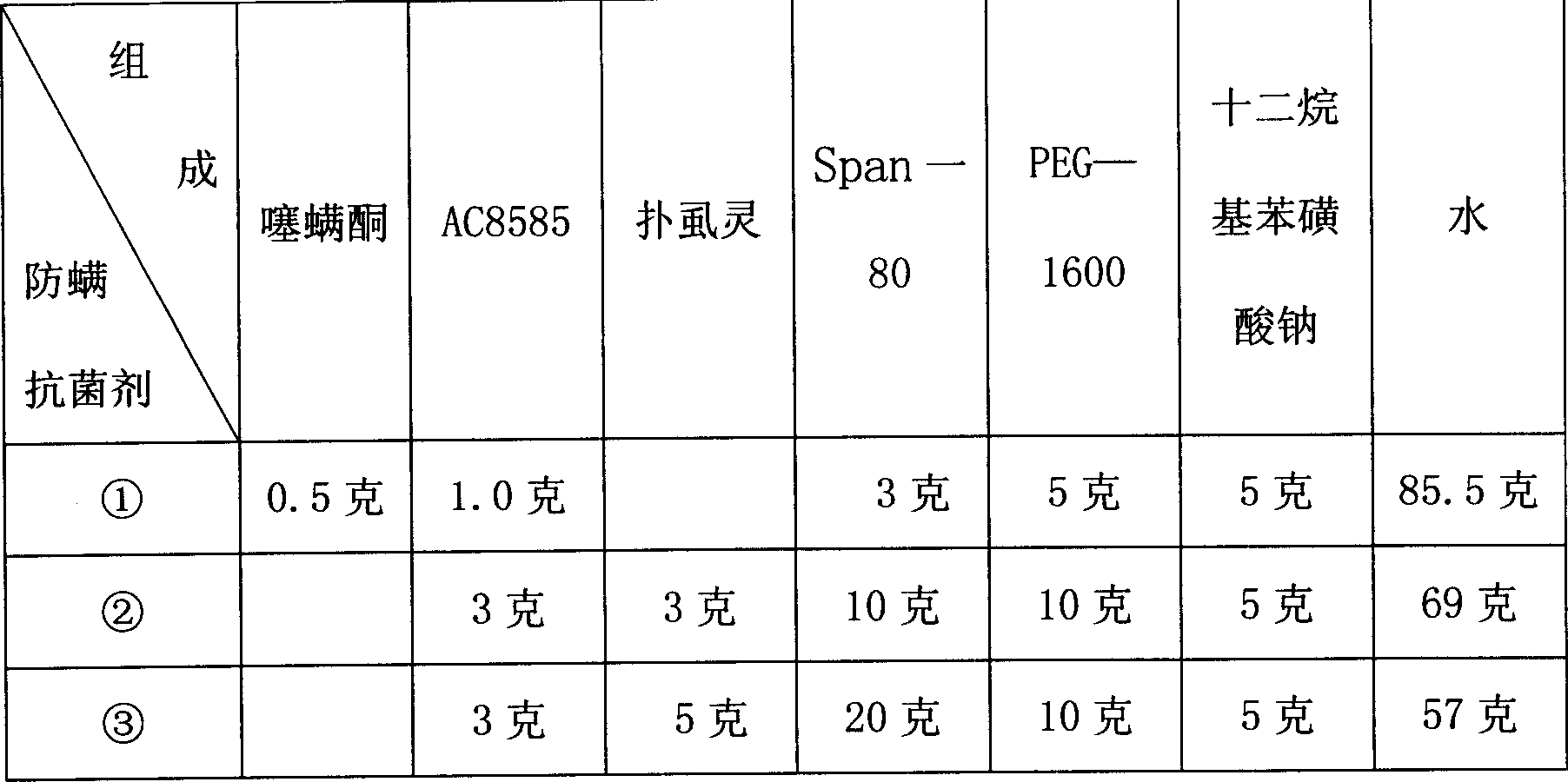Acarus-proof antibiotic cellulose fiber
A cellulose fiber and anti-mite technology, applied in the field of cellulose fibers, can solve the problems of affecting the durability of the anti-mite effect, high production cost, complicated process, etc., and achieve the effects of good anti-mite effect, low production cost and simple process
- Summary
- Abstract
- Description
- Claims
- Application Information
AI Technical Summary
Problems solved by technology
Method used
Image
Examples
Embodiment Construction
[0006] The following table 1 provides the specific formulations of three anti-mite antibacterial agents:
[0007] Table 1 anti-mite antibacterial agent formula
[0008]
[0009] The following table 2 provides the specific blending ratios of the above three anti-mite antibacterial agents and cellulose (a-Cell), forming nine kinds of anti-mite antibacterial cellulose fiber embodiments:
[0010] Blend ratio
[0011] The nine anti-mite and anti-bacterial fibers obtained by spinning according to the above ratios were tested for anti-mite effects. The detection method of the anti-mite effect was based on the "Anti-mite Fabric Avoidance Test Method" formulated by the Japan Clothing Products Quality and Performance Countermeasures Association in 1998. The test results See the table below:
[0012] The sequence of anti-mite viscose fiber
[0013] The above table shows that the anti-mite and antibacterial fiber of the present invention has good anti-mite effect.
PUM
 Login to View More
Login to View More Abstract
Description
Claims
Application Information
 Login to View More
Login to View More - R&D
- Intellectual Property
- Life Sciences
- Materials
- Tech Scout
- Unparalleled Data Quality
- Higher Quality Content
- 60% Fewer Hallucinations
Browse by: Latest US Patents, China's latest patents, Technical Efficacy Thesaurus, Application Domain, Technology Topic, Popular Technical Reports.
© 2025 PatSnap. All rights reserved.Legal|Privacy policy|Modern Slavery Act Transparency Statement|Sitemap|About US| Contact US: help@patsnap.com

